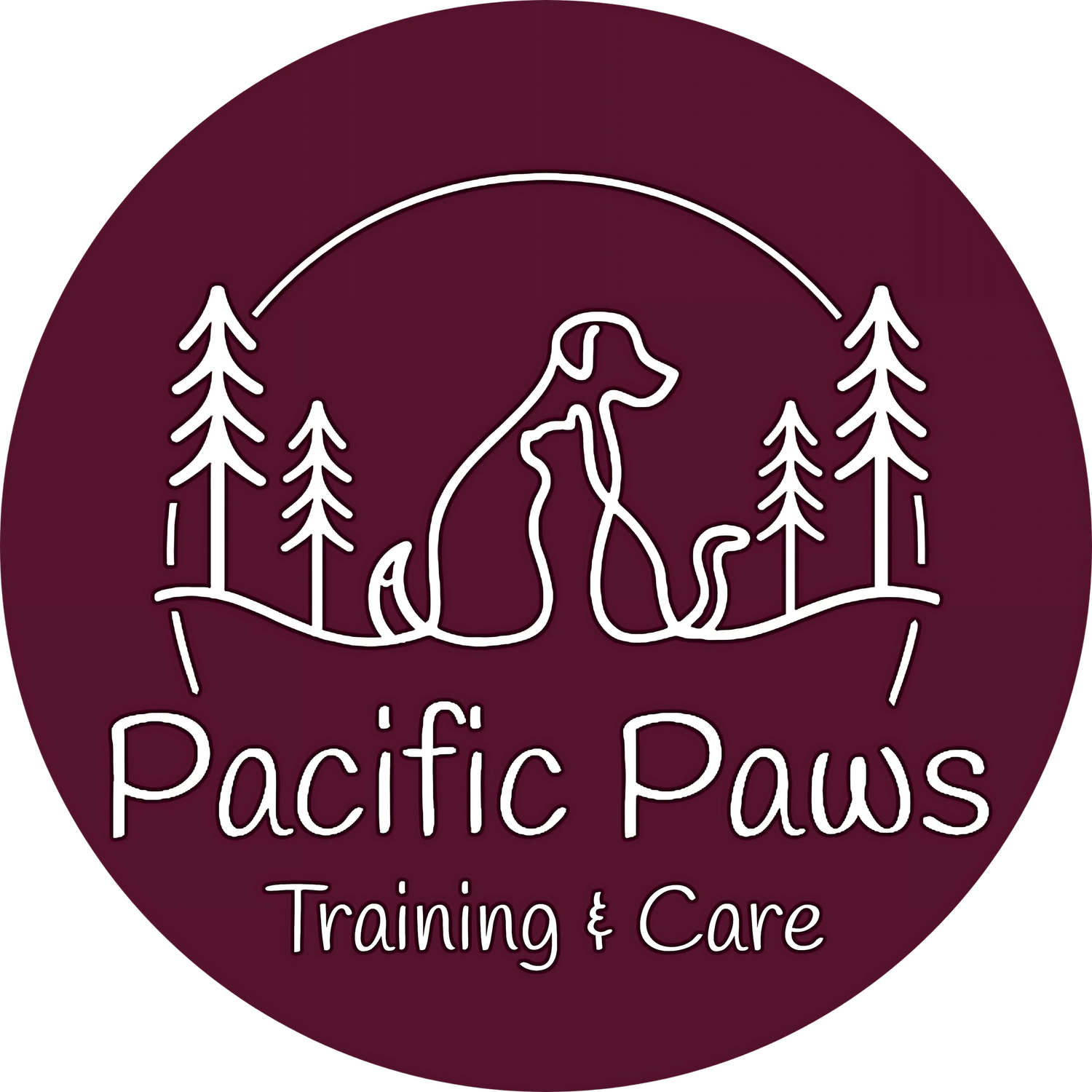Go-Home Guide
Now that your dog has graduated from their training program, it’s your job to reinforce and strengthen it!
Here are some key concepts to keep working on:
-
No furniture, no free-feeding, no jumping up; this is the time to be strict and set clear boundaries while we’re teaching them new behaviors and habits. Show your dog that you will follow through with your expectations no matter what and therefore so should they. A privilege is only given when they prove to us that they can handle it.
Ignore the bad, reward the good: Don’t give your dog any attention (including eye contact) when they’re jumping, whining, demand barking or exhibiting an unwanted behavior. Wait until they are calm and neutral before acknowledging them. Instead of telling our dogs what not to do, we need to show them what to do.
-
Walking Drills: Create patterned and predictable movements with lots of directional changes. If they ever initiate pressure on the leash, immediately change directions or apply leash pressure until they give in. We want them to learn that they only get to move forward if they’re by your side with slack in the leash (no leash pressure). Go into leash work if your dog is stating to react or fixate on triggers.
Structured loose leash walk: Keep the beginning and the end of your walks structured - no stopping, no sniffing, just a loose leash walk - approximately the first and last 5 minutes. When you’re ready to let them have free time and go potty, guide them to a piece of grass and release them, “break”.
-
Crate them in intervals between activities and at night. Structured downtime is extremely important to a dog’s nervous system.
-
With every doorway, car door, crate door or before approaching their food. Wait for them to be calm and give you eye contact - then release them, “break”.
-
Praise/reward them for giving you eye contact - this helps build your relationship and foster a sense of leadership and trust.
-
Make them stop and sit at all crosswalks, curbs, etc., wait for eye contact, then release them, “break” or “let’s go”.
-
Incorporate recall into everyday life across various settings. Do this with a long-line to hold them accountable. The expectation when they come back to you is to stay there until released. Wait for eye contact to release them, “break”.
-
Practice regular place time. They’re only allowed to leave when released (unless they put themselves there).
-
Help them practice self-regulation and self-soothing by tethering them to place and letting them work through their discomfort on their own. This same concept applies inside the crate.
-
Have your dog sit and watch their surroundings in new settings, praising/rewarding for staying neutral.
-
Practice downstays on and off place. Don’t set your expectations too high, reward them for staying in position for just a few moments at a time, gradually increase the duration they stay on before guiding or releasing them off.
-
Lure your dog into the heel position. Once your dog has mastered this, begin moving forward, rewarding them frequently. Only reward them down by your side where you want them to be.
-
If your dog has been e-collar conditioned, maintain your expectations and use the e-collar accordingly. Remember, the e-collar is only used to reinforce behaviors and concepts that the dog already knows.
Refer to the “Guide to E-Collars” ebook.
In Conclusion & Next Steps:
For next steps, if we wanted to advance their understanding of the foundations we’ve set with more complexity or add more tricks & commands, we can always:
Schedule another training program.
Schedule more private training sessions.
Schedule day trains to put these new skills into practice.
Or schedule regular fulfillment services to reinforce these skills for life.
And of course, don’t hesitate to reach out with any questions!
For additional training services, use code TRAIN10 for 10% off.
Command Glossary
This glossary is for common words and phrases that are used to communicate with our dogs.
Back: Move back from where you are.
Break: You are released from your current position; you’re welcome to move freely.
Come: Recall back to me.
Crate: Go into your crate.
Down: Lie down; front elbows should be on the ground.
Focus: Give me direct eye contact.
Good: Keep doing what you’re doing and I will come reward you.
Heel: Sit or walk by my side.
Hop Up/Up: Jump up.
Leave It: Break your fixation and redirect to me.
Left: Get into a heel position on my left side.
Let’s Go: Keep up with me, continue moving, or turn with me.
No: Stop doing what you’re doing.
Off: Get down from where you are.
Out: Drop what’s in your mouth.
Place/Go To Place: Go to your designated place; all four paws on place.
Potty/Go Potty: Saying this as they are actively going potty and/or preemptively.
Right: Get into a heel position on my right side.
Sit: Sit your butt down.
Spin: Turn around in a circle.
Stay: Stay where you are, until released.
Stop: Stop walking and sit.
Touch: Touch your nose to my hand.
Uh-uh: You did something incorrectly, try again.
Yes: What you just did was correct, come get your reward.
